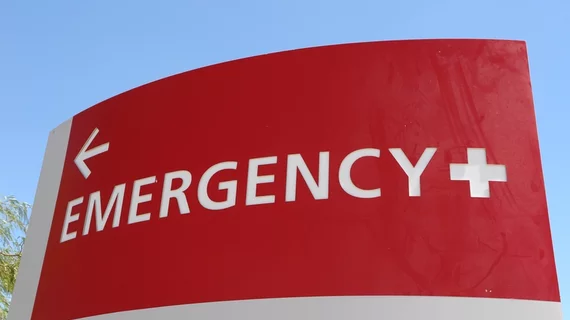Researchers have developed a new risk score capable of identifying when atrial fibrillation (AFib) patients who visit the emergency department (ED) are at an elevated risk of new-onset heart failure (HF), sharing their findings in the Journal of the American Heart Association.
The group tracked 15,400 AFib patients who received care at one of 164 sites around the world. Fifty-three percent of the patients were men, the mean patient age was nearly 65 years old, and 9,765 of the group had no prior history of HF. Signs of left ventricular hypertrophy (LVH) were seen in 17% of patients.
After one year of follow‐up, the endpoint of HF hospitalization and/or HF death occurred in 6.8% of patients. While that number was 28% in low-income countries, it was 5.3% in low/middle-income countries, 6.9% in upper/middle-income countries and 6.6% in high-income countries.
Independent predictors of HF included LVH, valvular heart disease, smoking, height, age, rheumatic heart disease, prior myocardial infarction, remaining in AFib at ED discharge, and diabetes.
The study's authors used these predictors to develop their LVS‐HARMED risk score for predicting new-onset HF in patients who visit the ED for AFib. Other factors, including BMI and the presence of a pacemaker, were not included in the final model after they were found to not be helpful.
The risk score was developed using data from 47 different countries, which the team saw as a clear strength compared to the work of some previous research groups.
“This has permitted us to generate a score that is based on variables that are easy to obtain in the ED and is valid worldwide," wrote lead author Linda S. B. Johnson, MD, PhD, department of clinical physiology at Skåne University Hospital in Sweden, and colleagues. "Many risk scores are developed in less diverse settings; healthcare access and practices vary widely among the included countries, as do underlying condition."
Overall, Johnson et al. wrote, the LVS‐HARMED risk score was able to accurately identify patients at an especially high risk of new-onset HF; it even successfully predicted incident stroke.
Its effectiveness was seen across the board.
"The risk of new‐onset HF is high in patients following an ED visit for AFib in all countries, regardless of economic status," the authors concluded. "This risk can be quantified using the LVS‐HARMED score. Preventative strategies should be considered in patients with high LVS‐HARMED HF risk."
Read the full study here.
